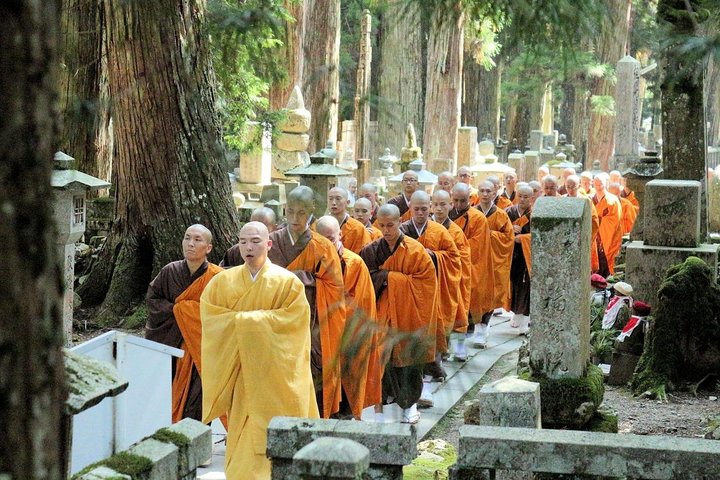Koyasan: A Pilgrimage Through Time and Spirit
Drawn by the allure of Koyasan’s sacred temples and rituals, I embarked on a pilgrimage that promised spiritual enrichment and a deeper connection to the divine. Join me as I recount my journey through this tranquil Buddhist sanctuary.
Crossing the Threshold of Koyasan
As I embarked on my journey to Koyasan, I was reminded of the many pilgrimages I have undertaken in my life, each one a step towards understanding the divine tapestry that weaves through our existence. The journey to Koyasan began at the towering gates of Daimon, a resplendent vermilion structure that stands as a sentinel to the sacred grounds beyond. As I passed through these gates, I felt a profound sense of crossing into a realm where time seemed to stand still, and the whispers of ancient monks echoed through the cedar-scented air.
The path led me to Kongobu-ji, a temple steeped in history and devotion. Built by Toyotomi Hideyoshi in memory of his mother, this temple is a testament to the enduring bonds of family and faith. As I wandered through its serene halls, I was struck by the harmony of its architecture, a reflection of the spiritual balance that Shingon Buddhism seeks to cultivate. Here, I took a moment to meditate, allowing the tranquility of the surroundings to wash over me, much like the meditative practices I have experienced in the Middle East, where the call to prayer resonates with the soul.
The Heart of Koyasan: Danjo Garan
The next stop on my pilgrimage was the Danjo Garan complex, a place that embodies the spiritual heart of Koyasan. The Kondo Hall and the Konpon Daito Pagoda stand as monumental testaments to the enduring legacy of Kobo Daishi, the founder of Shingon Buddhism. As I stood before these architectural marvels, I was reminded of the great mosques and temples I have visited in my travels, each one a beacon of faith and devotion.
In the quietude of the Kondo Hall, I found a space to reflect on the teachings of Sakyamuni, the Buddha of healing. The hall’s history of resilience, having been rebuilt multiple times, resonated with me as a symbol of spiritual perseverance. The Konpon Daito Pagoda, with its towering presence, offered a panoramic view of the surrounding landscape, a reminder of the interconnectedness of all things, a theme that echoes through the spiritual teachings I have encountered in my studies.
A Journey Through Time at Okunoin
The final leg of my pilgrimage took me to Okunoin, the sacred resting place of Kobo Daishi. The path to his mausoleum is lined with over 200,000 moss-covered headstones, each one a silent witness to the passage of time. As I walked this ethereal path, I felt a deep connection to the countless souls who have walked before me, each one seeking solace and enlightenment.
The air was thick with the scent of cedar and the gentle rustle of leaves, creating a symphony of nature that accompanied my thoughts. At the mausoleum, I paused to offer a prayer, reflecting on the teachings of Kobo Daishi and the spiritual journey that had brought me here. It was a moment of profound peace, akin to the serenity I have found in the sacred sites of Jerusalem and Mecca, where the divine presence is palpable.
As I left Koyasan, I carried with me a renewed sense of spiritual purpose, a reminder of the interconnectedness of all faiths and the universal quest for enlightenment. This pilgrimage was not just a journey through sacred temples and rituals, but a journey within, a step closer to understanding the divine within us all.


































